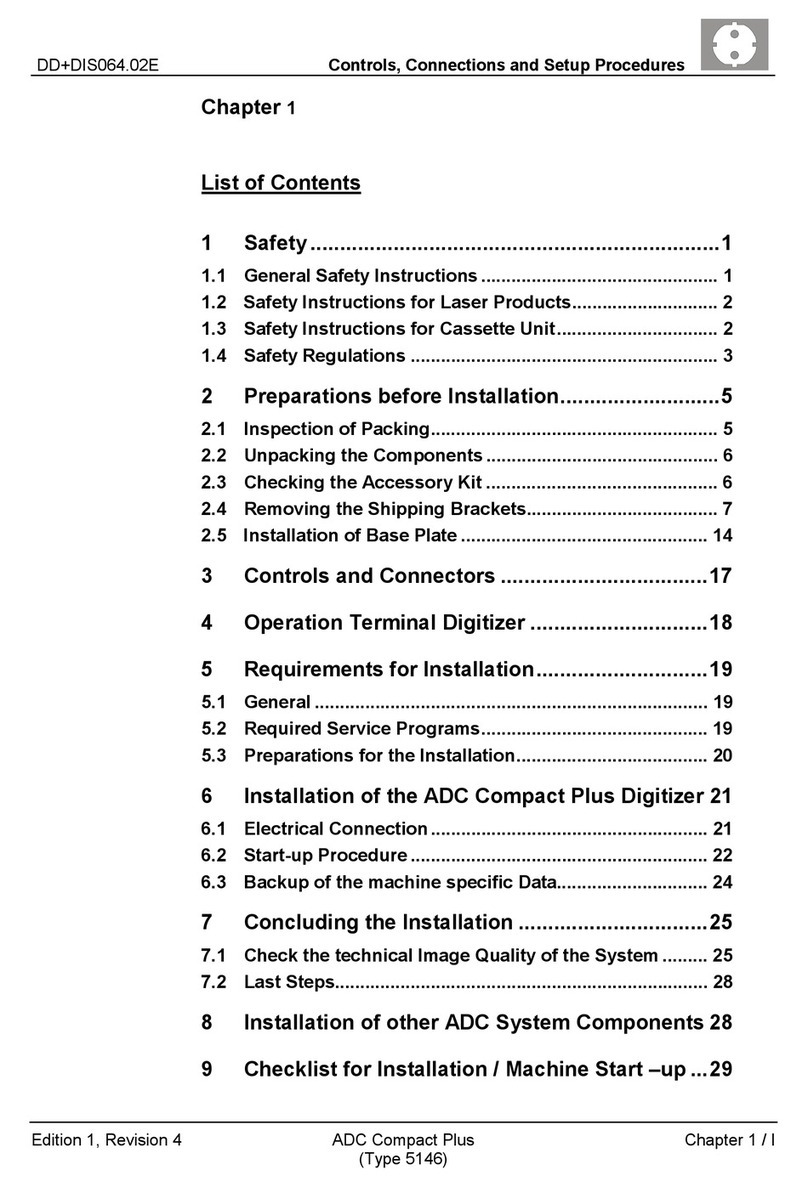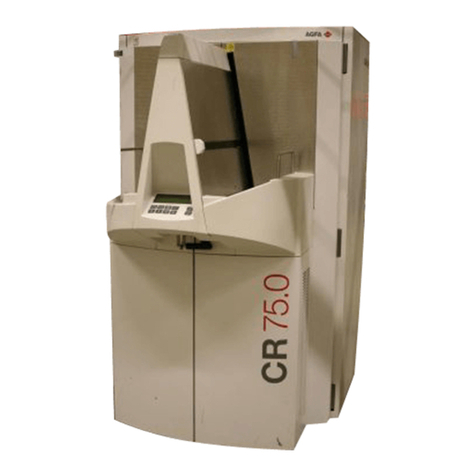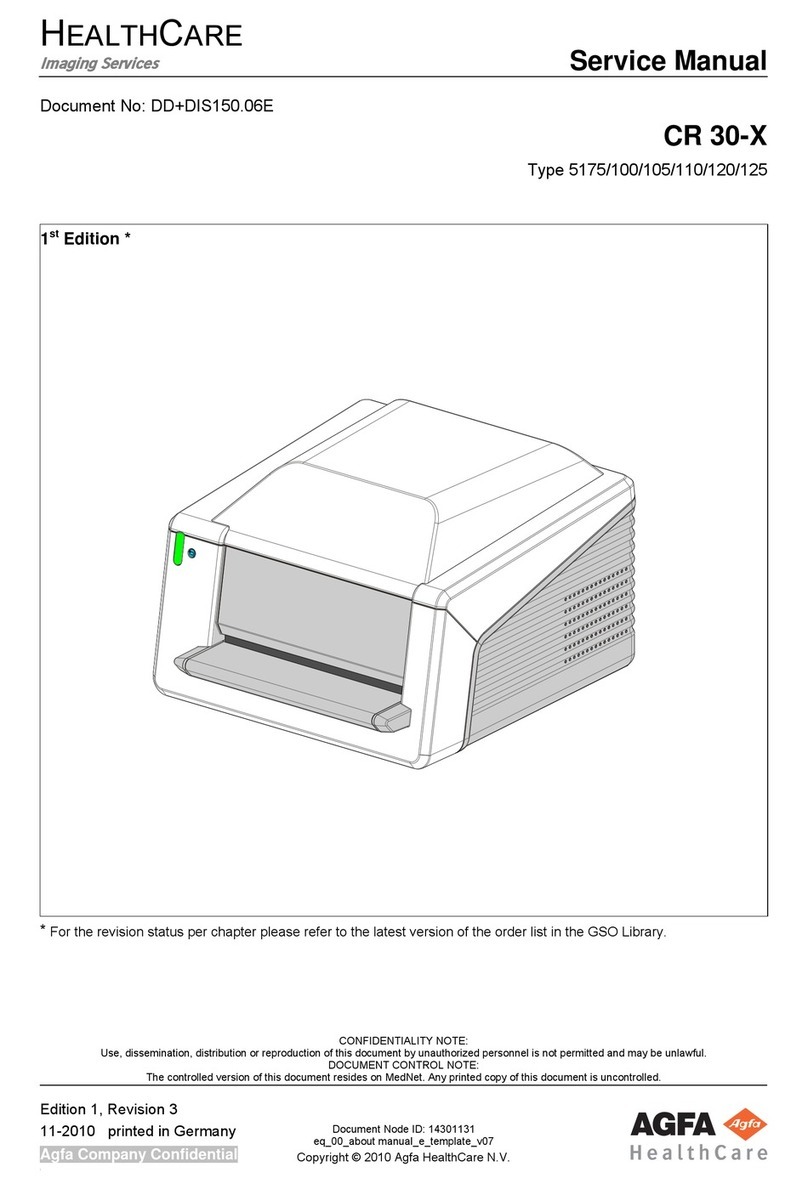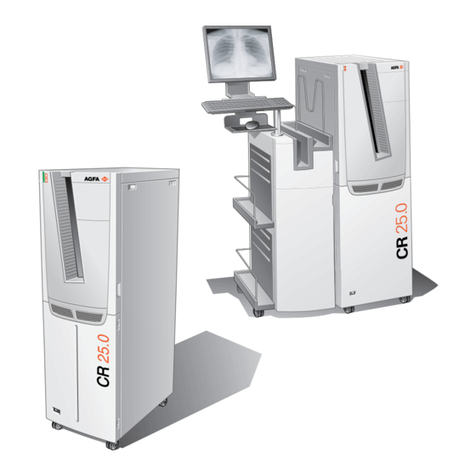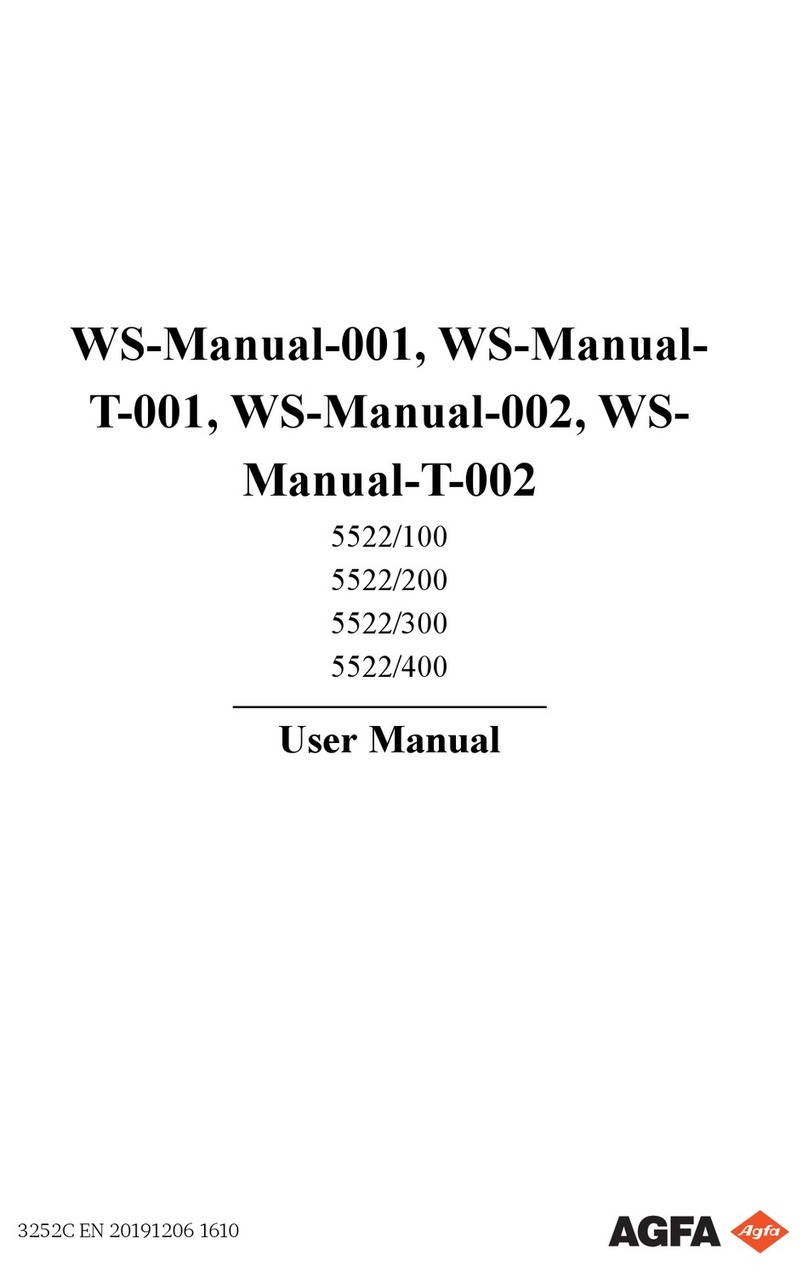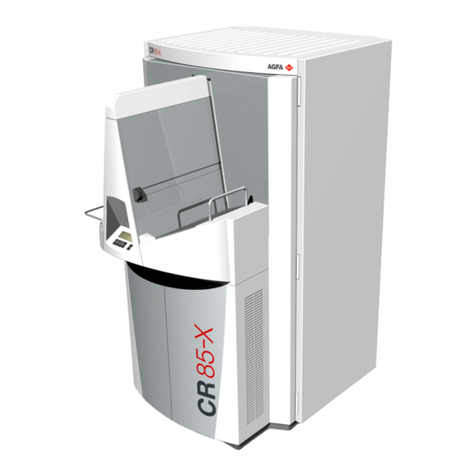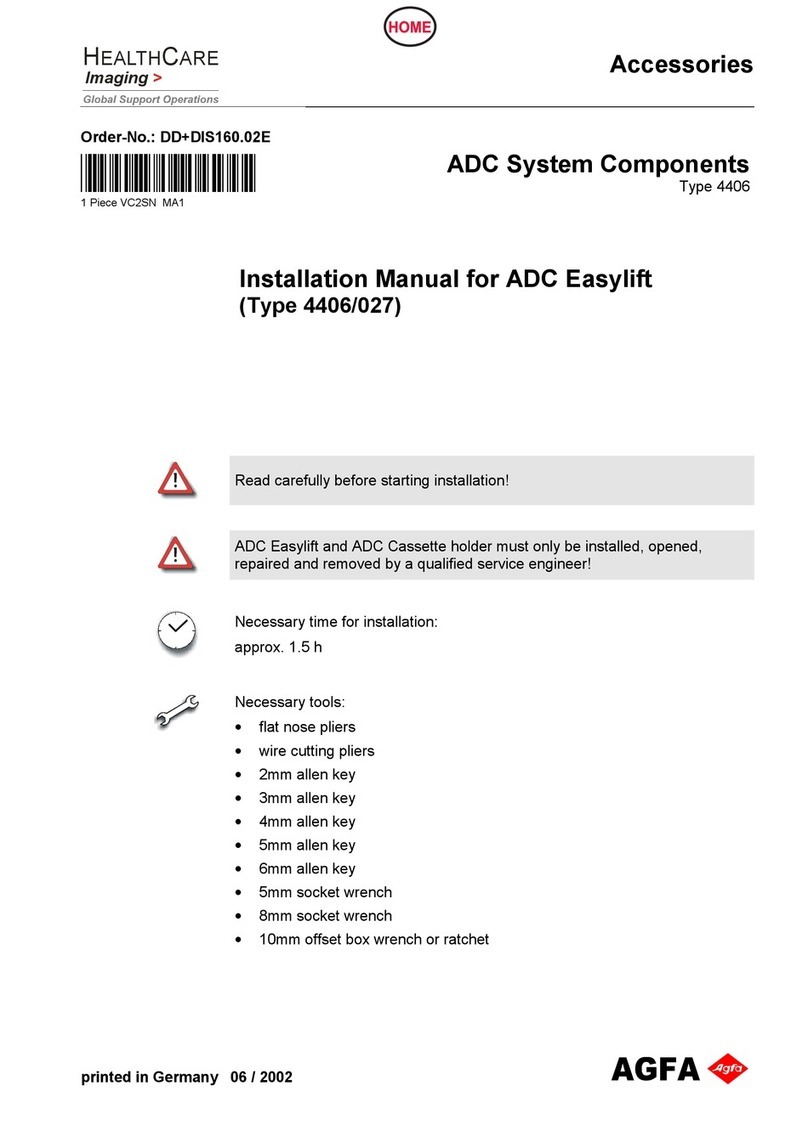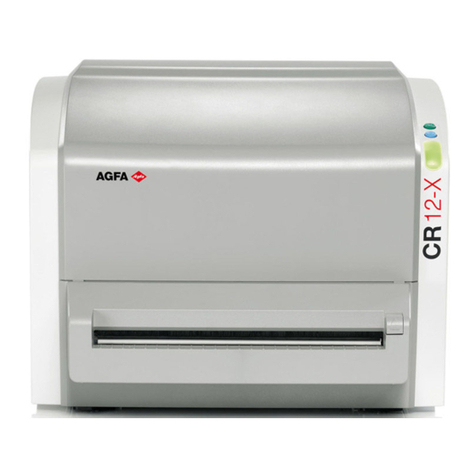
7
2301D EN 20040224
Safety precautions
General safety instructions
•For software and other technical platforms, and/or in combination with any con-
sumable, which constitute, after installation, a system for the interpretation of
medical image data: such system is used by trained and qualified professionals. It
is the user's responsibility to ensure that image quality, display quality, environ-
mental lighting and other possible distractions are consistent with the clinical
application. The user must be aware, that automatic collimation could possibly
lead to misinterpretation of the image.
•The ADC Solo has been designed for scanning medical X-ray image plates and
should only be used for these purposes.
•The ADC Solo must only be operated by qualified staff.
•Make sure that the ADC Solo is constantly monitored in order to avoid inappropri-
ate handling, especially by children.
•Only trained service personnel must make repairs. Only authorized service per-
sonnel must make changes to the ADC Solo.
•If there is any visible damage to the machine casing, do not start nor use the ADC
Solo.
•If you want to connect the ADC Solo with other devices, components or assem-
blies and if the technical data do not permit determining whether the combination
with these devices, components or assemblies involves hazards, you must consult
the respective manufacturers to avoid danger for operating personnel or the envi-
ronment.
•Do not override or disconnect the integrated safety features.
•Switch off the ADC Solo before performing any maintenance work or repairs. Dis-
connect the ADC Solo from the mains before making repairs or performing any
maintenance activities during which live electrical components may be exposed.
•As is the case for all technical devices, the ADC Solo must be operated, cared for
and serviced correctly.
•If you don’t operate the ADC Solo correctly or if you don’t have it serviced cor-
rectly, Agfa-Gevaert is not liable for resulting disturbances, damages or injuries.
•When installing the ADC Solo, care must be taken to ensure that there is either a
mains plug or an all-cable disconnecting device in the internal installation fitted
near the ADC Solo and that it is easily accessible.
•If you notice conspicuous noise or smoke, disconnect the ADC Solo immediately.
•Check that the voltage setting of the machine matches the power supply voltage
before connecting the machine to the mains.












